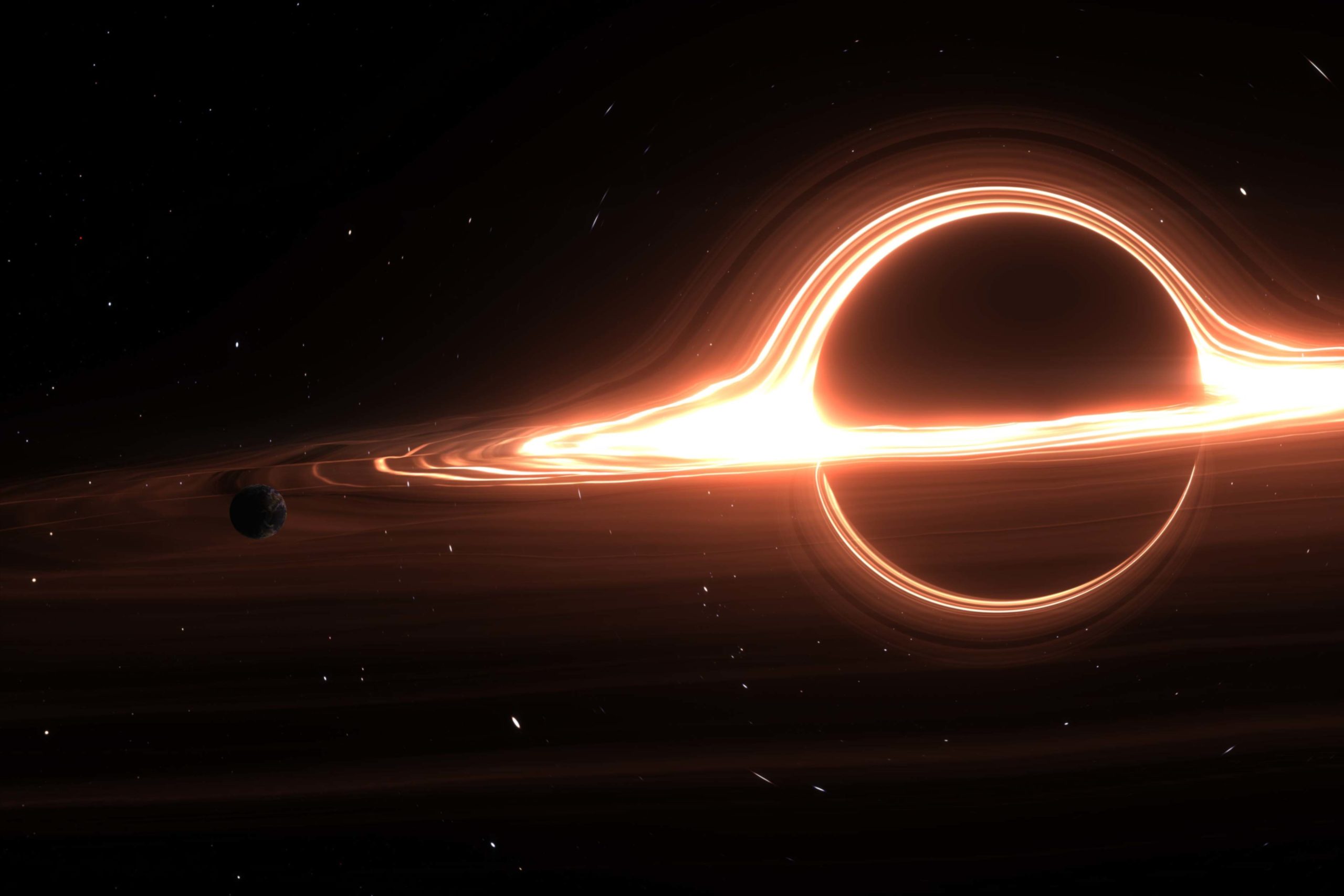Introduction
Black holes, often described as cosmic vacuum cleaners, are among the most mysterious and awe-inspiring objects in the universe. These celestial behemoths exert such an intense gravitational pull that nothing, not even light, can escape their grasp. In this article, we will delve into the depths of black holes, exploring their formation, properties, and their profound impact on the cosmos.
Formation of Black Holes
Black holes can form through two primary mechanisms:
1. Stellar Evolution: When a massive star, at least three times the mass of our Sun, reaches the end of its life, it undergoes a supernova explosion. The core that remains after the explosion can collapse under its own immense gravity, forming a black hole. This process is akin to a collapsing skyscraper, where the weight of the upper floors crushes the lower ones.
2. Gravitational Collapse: Supermassive black holes, found at the centers of galaxies, are believed to have formed from the gradual accumulation of matter over billions of years. As more and more material falls into the central region, it compresses and eventually collapses into a black hole. This process is similar to a whirlpool that becomes increasingly powerful as it draws in more water.
Properties of Black Holes
Black holes are characterized by several key properties:
- Event Horizon: This is the boundary around a black hole beyond which nothing can escape. It's a region of spacetime where the gravitational pull is so strong that even light, the fastest thing in the universe, is trapped. Imagine the event horizon as a one-way street leading to an abyss.
- Singularity: At the center of a black hole lies a singularity, a point of infinite density and curvature. This is a region where the laws of physics as we understand them break down. It's like trying to imagine a point where the universe ends.
- Mass: Black holes are classified by their mass. They can range from stellar-mass black holes, a few times the mass of our Sun, to supermassive black holes, billions of times the mass of our Sun.
- Spin: Many black holes are believed to spin rapidly, which can have significant effects on their surrounding environment. This rotation can create powerful jets of material that can be observed across vast distances.
- Electric Charge: While most black holes are believed to have little or no electric charge, some may carry a charge. This charge can influence the behavior of matter and energy near the black hole.
The Impact of Black Holes
Black holes play a crucial role in the evolution of galaxies and the universe as a whole. Some of their key impacts include:
- Galaxy Formation and Growth: Supermassive black holes at the centers of galaxies are believed to play a role in regulating galaxy formation and growth. Their gravitational influence can disrupt star formation and influence the distribution of gas and dust within a galaxy.
- Active Galactic Nuclei (AGN): When material falls into a supermassive black hole, it can release immense amounts of energy, creating an active galactic nucleus (AGN). AGNs are among the most luminous objects in the universe and can have a significant impact on their host galaxies.
- Gravitational Waves: The merger of black holes can produce gravitational waves, ripples in spacetime that travel at the speed of light. The detection of gravitational waves has confirmed the existence of black holes and provided new insights into the nature of gravity.
- Time Dilation: Due to the extreme gravitational pull of a black hole, time runs slower near it compared to regions farther away. This phenomenon is known as gravitational time dilation. For example, an observer near a black hole would age slower than an observer far away.
Future Research
Despite our significant progress in understanding black holes, there are still many mysteries to unravel. Future research may focus on:
- The nature of singularities: Scientists are working to develop theories that can explain the behavior of matter and energy at the singularity.
- The formation of supermassive black holes: How these massive objects formed and grew to their enormous sizes remains a topic of active research.
- The effects of black holes on their surrounding environments: How black holes interact with stars, gas, and dust in their vicinity is a complex and ongoing area of study.
- The potential for life near black holes: While it seems unlikely, some scientists have speculated about the possibility of life existing in regions near black holes, where the gravitational effects could create unique conditions.
Black holes continue to be a subject of fascination and scientific inquiry. As our understanding of these cosmic behemoths grows, we are gaining new insights into the fundamental nature of gravity and the universe itself.



0 Comments